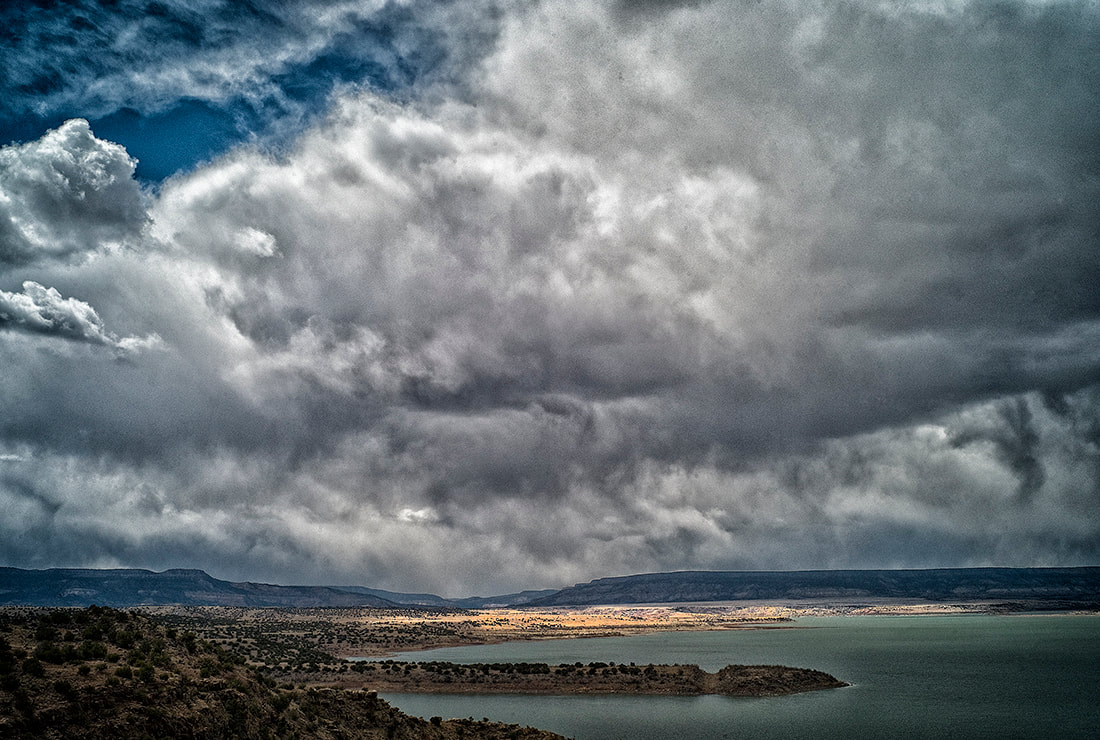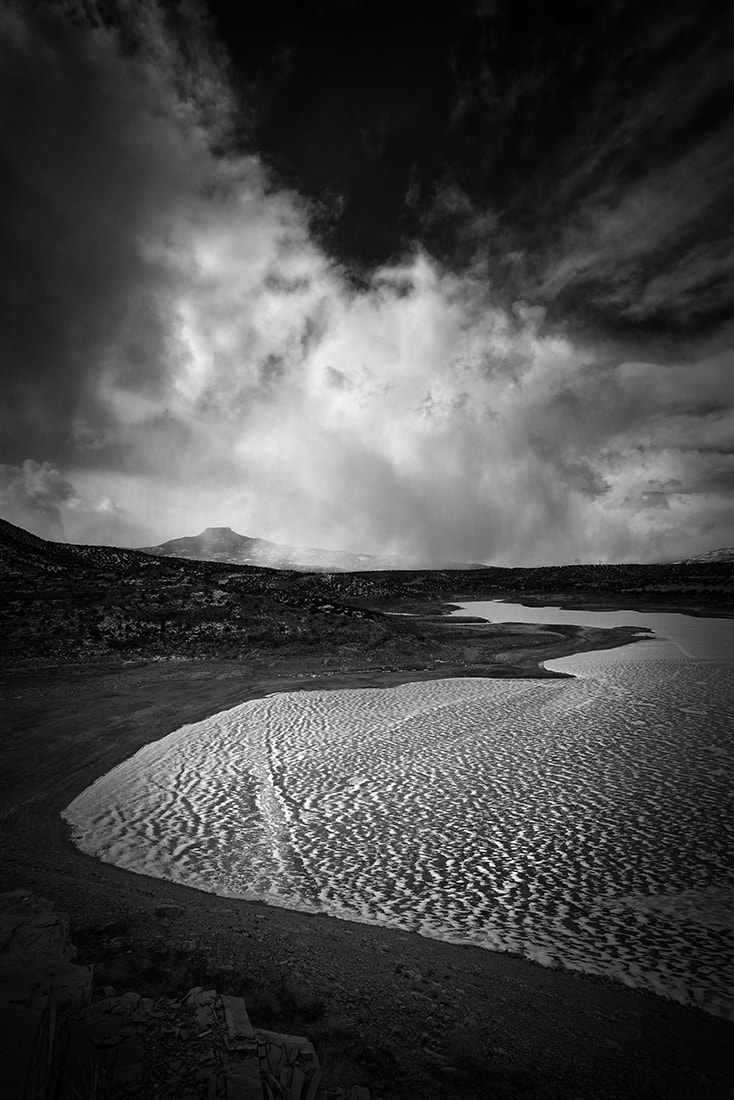Abiquiu Dam
Abiquiu Dam is a dam on the Rio Chama, located about 60 miles (97 km) northwest of Santa Fe in Rio Arriba County, New Mexico. Built and operated by the U.S. Army Corps of Engineers, the dam is an earth embankment structure 354 feet (108 m) high and 1,800 feet (550 m) long, containing 11.8 million cubic yards (9,022,000 m3) of fill. The dam forms Abiquiu Lake, one of the largest lakes in New Mexico with a full storage capacity of 1,369,000 acre-feet (1,689,000 dam3) and 5,200 acres (2,100 ha) of water. To date, the reservoir has never filled to capacity, with a record high of 402,258 acre-feet (496,178 dam3), 29.4% of full pool, on June 22, 1987 and currently, due to drought conditions, the water level has fallen to all time lows. The water level can be check daily at the Dam's website. The dam's primary purpose is flood control, in addition to irrigation and municipal water storage, and hydroelectric generation.
The first proposal for a flood control dam on the Rio Chama was introduced in the Flood Control Act of 1948. The original plans called for the construction of a low dam at Chamita, about 20 miles (32 km) downstream of the present site of Abiquiu Dam. In the 1950s a dam at Abiquiá was added to the project, and it was later determined that a single high dam at this site would be sufficient. In the subsequent Flood Control Act of 1960, the Chamita dam was removed from the project. Construction of Abiquiu Dam began in 1956 and the river was diverted in July 1959. Limited flood control operations began in 1962 and the dam was completed on February 5, 1963, at a cost of $21.2 million.
The dam initially functioned as a dry dam, with a very small permanent reservoir pool for sediment trapping purposes. In 1974 the city of Albuquerque petitioned the Corps for the regular storage of up to 200,000 acre-feet (250,000 dam3) in the reservoir as part of the San Juan-Chama Project. The Corps agreed in 1976 to allow this storage, also increasing the minimum reservoir volume to 44,400 acre-feet (54,800 dam3) for recreation purposes.[6] In 1986, the dam was raised by 13 feet (4.0 m) and the emergency spillway widened from 40 feet (12 m) to 80 feet (24 m).
In 1990 a small power station was constructed at the dam base providing a capacity of 13.5 megawatts (MW).[2] Between 2009–2011, the addition of a turbine increased the plant's capacity to 16.5 MW. The hydroelectric plant is operated by Los Alamos County Department of Public Utilities.
The first proposal for a flood control dam on the Rio Chama was introduced in the Flood Control Act of 1948. The original plans called for the construction of a low dam at Chamita, about 20 miles (32 km) downstream of the present site of Abiquiu Dam. In the 1950s a dam at Abiquiá was added to the project, and it was later determined that a single high dam at this site would be sufficient. In the subsequent Flood Control Act of 1960, the Chamita dam was removed from the project. Construction of Abiquiu Dam began in 1956 and the river was diverted in July 1959. Limited flood control operations began in 1962 and the dam was completed on February 5, 1963, at a cost of $21.2 million.
The dam initially functioned as a dry dam, with a very small permanent reservoir pool for sediment trapping purposes. In 1974 the city of Albuquerque petitioned the Corps for the regular storage of up to 200,000 acre-feet (250,000 dam3) in the reservoir as part of the San Juan-Chama Project. The Corps agreed in 1976 to allow this storage, also increasing the minimum reservoir volume to 44,400 acre-feet (54,800 dam3) for recreation purposes.[6] In 1986, the dam was raised by 13 feet (4.0 m) and the emergency spillway widened from 40 feet (12 m) to 80 feet (24 m).
In 1990 a small power station was constructed at the dam base providing a capacity of 13.5 megawatts (MW).[2] Between 2009–2011, the addition of a turbine increased the plant's capacity to 16.5 MW. The hydroelectric plant is operated by Los Alamos County Department of Public Utilities.
To contact Bob Eckert for assignments, consultations or workshops, please email [email protected]
or use the contact form on the About page
or use the contact form on the About page
















